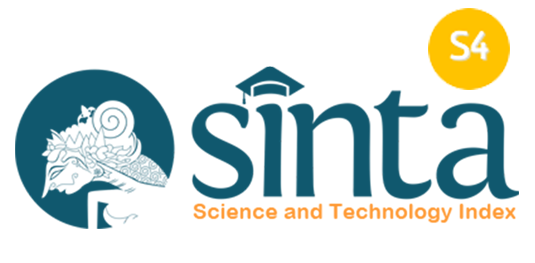Sistem Informasi Geografis Pemetaan Sebaran Lokasi Objek Daya Tarik Wisata Kota Tasikmalaya
Abstract
Administratively, Tasikmalaya City oversees 10 sub-districts with 69 villages that have an area of 183.85 Km2 with 49 locations of ODTW (Tourism Attraction Objects). With so many ODTW in Tasikmalaya City, it should be a leading tourist attraction. However, these 49 ODTW in Tasikmalaya City are not well known by the general public. This happens because the development of tourism industry promotion has not been optimized. Therefore, an application is needed to map the distribution of ODTW locations in Tasikmalaya City as a means of promoting the tourism industry in Tasikmalaya City. This research was conducted with the aim of increasing the promotion of the potential ODTW of Tasikmalaya City to attract domestic and foreign tourists which of course can increase regional income and the economy of the people of Tasikmalaya City. The method of implementing application development uses a waterfall model which has several stages in the implementation of its research. The first research stage is communication, including: (a) identification of potential, (b) identification of problems, (c) identification of application features and functions, (d) data collection. The second research stage, planning, includes: (a) team formation and division of work tasks, (b) preparation of research schedule, (c) preparation of research costs. The third research stage is modeling, including: (a) database structure design, (b) algorithm design, (c) system design, (d) interface design. The fourth research stage is construction, including: (a) code validation, (b) code testing. The fifth research stage deployment includes: (a) application program revision, (b) application program implementation, (c) application program development, (d) feedback. The results of the research are in the form of an android-based Tasikmalaya City tourist attraction location mapping application equipped with location search features, location share features and language features (Indonesian and English).
Keyword: SIG; Tour; Tasikmalaya City
Full Text:
PDF (27-33)References
E. Khoerotunnisa, “Sistem Informasi Geografis (SIG) Berbasis WEBGIS Untuk Pemetaan Persebaran Objek Wisata Di Kota Tasikmalaya,” 2023.
D. K. O. K. dan Pariwisata, Laporan Kinerja Instansi Pemerintah Dinas Kepemudaan Olahraga Kebudayaan dan Pariwisata Tahun 2022, vol., no. Kota Tasikmalaya: Dinas Kepemudaan Olahraga Kebudayaan dan Pariwisata, 2020.
N. Andriyani and Sularno, “Sistem Informasi Geografis Web Untuk Menentukan Objek Wisata Kota Bukittinggi,” J. Sist. Inf. Dan Inform., vol. 1, no. 1, pp. 1–7, 2023.
J. Santoso, A. Nugroho, and M. Samsudin, “Sistem Informasi Georafis Pemetaan Dilengkapi Rute Menuju Obyek Wisata Kabupaten Bandung Barat Berbasis WEBGIS,” J. Teknol. Inf. dan Komput., vol. 9, no. 2, pp. 253–260, 2013.
D. Asdaningsih, S. Lutfi, A. Mubarak, and M. Salmin, “Sistem Informasi Geografis Pemetaan Lokasi Kafe Di Kota Ternate Berbasis Web,” JATI (Jurnal Jar. dan Teknol. Inf. ), vol. 2, no. 1, pp. 52–59, 2023.
Darsin and M. G. Triyoga, “Perancangan Geographic System Information Wisata Daerah Kabupaten Tulang Bawang Barat Berbasis Website,” J. Ilm. Inform. Komput., vol. 27, no. 3, pp. 269–278, 2023.
Antoni Zulius, “Sistem Informasi Geografis Untuk Menentukan Lokasi Potensi Wisata Di Dinas Perhubungan Kota Tasikmalaya Berbasis Web,” Jti, vol. 4, no. 1, pp. 48–52, 2012.
M. R. Nugraha and L. Listiani, “Sistem Informasi Geografis Untuk Pemetaan UMKM Kota Tasikmalaya,” J. VOI (Voice Informatics), vol. 12, no. 1, pp. 1–12, 2013.
D. A. Muslih, R. Kridalukmana, and K. T. Martono, “Perancangan Aplikasi Panduan Pariwisata Kota Tasikmalaya pada Perangkat Bergerak Berbasis Android,” J. Teknol. dan Sist. Komput., vol. 5, no. 1, pp. 1–6, 2017.
R. S. Pressman, Software Engineering A Practitioner’s Approach, Sevent Edi. McGraw-Hill, 2010.
DOI: https://doi.org/10.31294/evolusi.v11i2.16958
ISSN: 2657-0793 (online). ISSN: 2338-8161 (print)















